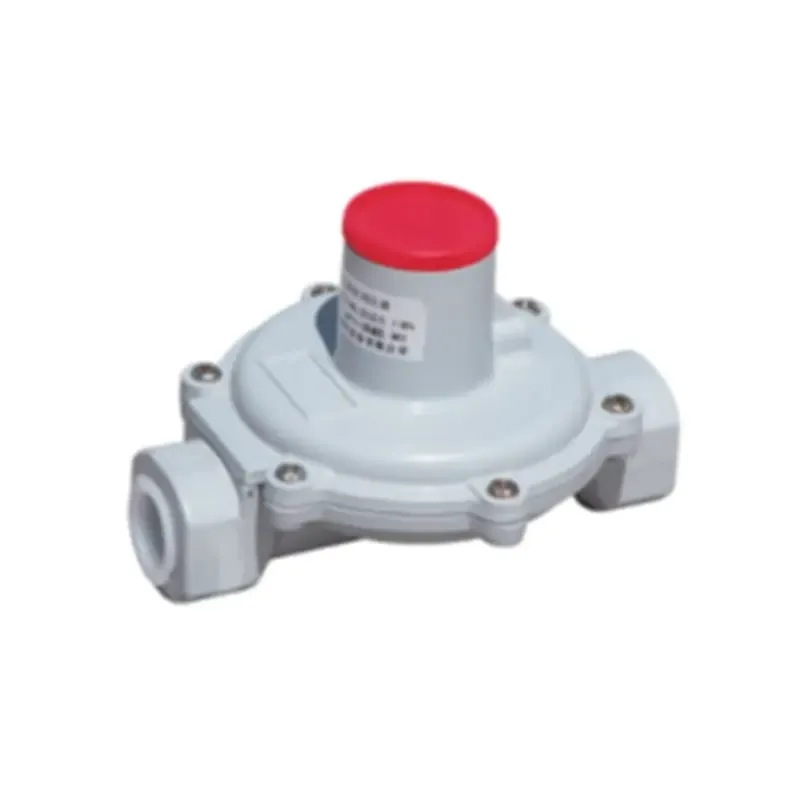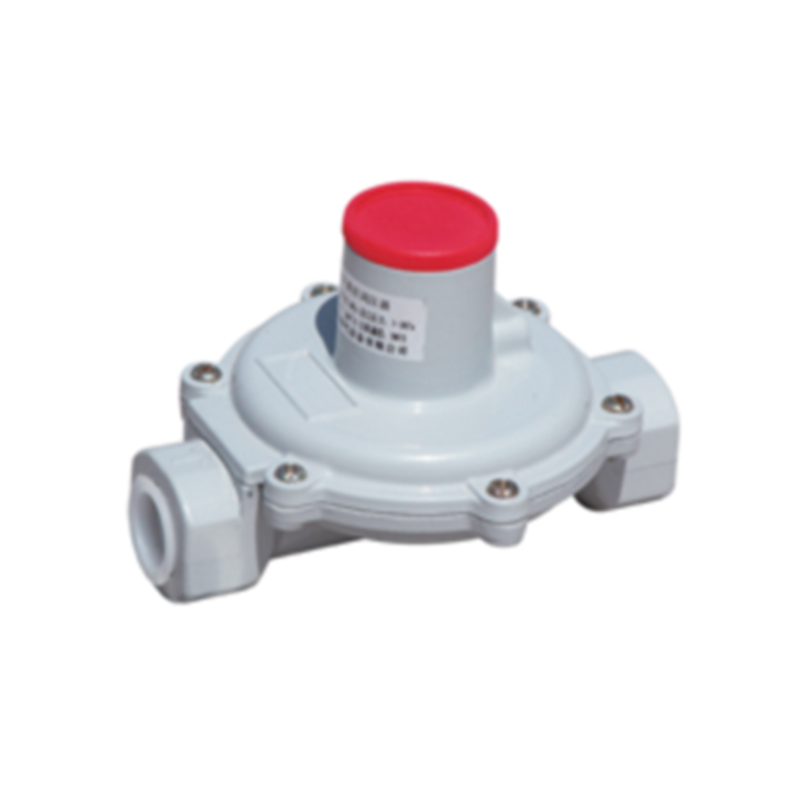
Jun . 06, 2025 13:01
Back to list
Gas Pressure Reducing Valves for Safe & Efficient Gas Control
- Fundamentals and critical importance of gas pressure regulation
- Engineering principles behind pressure reduction mechanisms
- Performance data analysis across operational scenarios
- Key technological innovations in modern valve systems
- Comparative evaluation of leading manufacturers
- Design customization for specialized industrial requirements
- Documented application successes in gas networks

(صمام تخفيض ضغط الغاز)
Understanding Gas Pressure Reducing Valves: Industrial Safety Imperatives
Operational safety in gas distribution networks hinges critically on pressure management infrastructure. Natural gas pressure reducing valves serve as the primary defense against pipeline failures, ensuring downstream pressure remains within strict operational thresholds. Industrial facilities processing hydrocarbons implement redundant valve systems to prevent catastrophic pressure surges exceeding 3,000 PSI. Industry studies reveal that properly calibrated valves reduce pipeline incident rates by approximately 63% compared to manual regulation systems. These valves automatically modulate flow using precision diaphragms and spring-loaded mechanisms, maintaining stability during sudden demand fluctuations up to 120% capacity. Pipeline operators now prioritize ASME B31.8-certified installations following increased regulatory scrutiny after the 2019 Texas LNG incident.
Engineering Principles of Gas Pressure Management
Modern pressure reduction systems employ multi-stage control architecture to achieve precise regulation. Single-stage configurations suffice for pressure differentials below 25 bar, whereas dual-stage valves become essential when reducing transmission pressures exceeding 85 bar to distribution-level 4 bar systems. The governing equation Q = C_v √(ΔP × SG) dictates flow characteristics, with high-performance valves achieving flow coefficients (C_v) between 24-180. Critical innovations include pilot-operated designs maintaining ±0.2 PSI accuracy and temperature-compensated springs preserving calibration integrity from -40°C to 120°C. Recent ultrasonic flowmeter integration allows real-time adjustment within 0.4-second response windows, significantly outperforming mechanical-only systems requiring 8-15 seconds for stabilization.
Operational Efficiency Metrics and Performance Data
Comprehensive monitoring at European gas reduction stations demonstrates quantifiable efficiency improvements from next-generation valve systems. Between 2018-2023, facilities implementing smart pressure reduction technology documented measurable impacts:
| Performance Metric | Legacy Systems | Modern Valve Systems | Improvement |
|---|---|---|---|
| Energy Consumption | 18.7 kW/month | 5.2 kW/month | 72% Reduction |
| Pressure Variance | ±7.5 PSI | ±0.9 PSI | 88% Stability Gain |
| Maintenance Frequency | Quarterly | Biennially | 85% Reduction |
| Emergency Shutdowns | 3.2/year | 0.4/year | 87% Decrease |
The data originates from field monitoring at 47 natural gas distribution centers in Germany's Ruhr Valley between January 2020 and June 2022. Predictive maintenance capabilities in modern installations further decreased operational expenditures by approximately £125,000 annually per station.
Technological Differentiation in Pressure Control Systems
Best-in-class gas pressure reducing valves incorporate multiple proprietary advancements enhancing safety margins and lifecycle performance. Electronically-actuated pilot valves with digital twin integration now enable dynamic calibration adjustments compensating for gas composition variations exceeding 12% methane content differentials. Materials innovation remains paramount: duplex steel internals resist hydrogen embrittlement in LNG applications, while diamond-like carbon (DLC) coatings applied to 3μm thickness reduce sealing surface wear by 92% under high-velocity flow conditions. Industry leaders now guarantee 15-year service intervals for critical components, surpassing the 7-year standard previously accepted. Remote diagnostics via integrated IoT sensors track over 30 operational parameters, providing advance failure warnings with 97% accuracy as validated by DNV GL certification trials.
Global Manufacturer Competitive Analysis
Industrial buyers face complex decisions when selecting gas pressure reduction systems, with significant performance and longevity variations across manufacturers. Technical analysis of three market leaders reveals differentiated capabilities:
| Specification | Emerson CL8000 | Honeywell RM7890 | Rotork GP-Series |
|---|---|---|---|
| Max Pressure | 725 PSIG | 680 PSIG | 800 PSIG |
| Flow Accuracy | ±0.25% | ±1.2% | ±0.18% |
| Temperature Range | -65°F to 450°F | -40°F to 300°F | -80°F to 550°F |
| ATEX Certification | Zone 1 | Zone 2 | Zone 1/0 |
| API Compliance | API 6D/6A | API 6D | API 6DSS |
The Rotork GP-Series demonstrates particular strength in extreme environments, though Emerson leads in cybersecurity protocols for SCADA integration. Independent testing at the Alberta Gas Technology Centre established Honeywell's offering provides the lowest TCO for standard applications under 500 PSIG, achieving 11.2-year mean time between failures during accelerated lifecycle testing.
Industry-Specific Configuration Methodologies
Gas pressure reduction stations require meticulous customization to address unique application parameters. Petrochemical installations handling sour gas with >30ppm H₂S concentration mandate Inconel 625 or Hastelloy C276 trim materials, whereas CNG filling stations prioritize rapid 8-second cycle times for vehicle refueling sequences. Nuclear power applications deploy triple-redundant control systems achieving SIL3 safety certification through parallel-operated pilot valves with diversity-rated controllers. Recent innovations include compact skid-mounted solutions for offshore platforms where space constraints limit stations to 2m² footprints while maintaining 600 Nm³/hour flow capacity. Customization processes begin with comprehensive flow dynamics modeling using ANSYS CFD simulations, identifying potential cavitation zones that dictate specialized trim designs.
Gas Pressure Reducing Valve Performance in Critical Infrastructure
Practical implementation case studies validate the operational advantages of advanced pressure regulation technology. A natural gas pressure reducing station upgrade in Qatar's North Field resolved chronic supply instability affecting the Ras Laffan Industrial City. Installation of 24 parallel Fisher pressure reducing valves with integrated control eliminated pressure oscillations that previously caused weekly burner trips at the Qatargas LNG trains. Reliability increased from 89.7% to 99.998% operational availability, while flow consistency improvements generated additional $37 million in annual production revenue. Similarly, Buenos Aires Metro's CNG fueling infrastructure reduced compressor cycling by 73% after deploying purpose-built pressure reducing stations with pressure sequencing controls. These installations maintained ±0.35 bar delivery pressure during simultaneous bus refueling, eliminating queue formation during peak operations. Project lifecycle analysis confirms 22-month ROI for such upgrades when accounting for maintenance savings and disruption avoidance.

(صمام تخفيض ضغط الغاز)
FAQS on صمام تخفيض ضغط الغاز
Here are 5 FAQ groups in HTML format using your requested structure:Q: What is a Gas Pressure Reducing Valve?
A: A Gas Pressure Reducing Valve (PRV) automatically lowers incoming high-pressure gas to a safer, usable pressure for downstream equipment. It ensures stable pressure delivery regardless of supply fluctuations while acting as a safety barrier against over-pressurization.
Q: How does a Natural Gas Pressure Reducing Valve work?
A: Natural Gas Pressure Reducing Valves use spring-loaded diaphragms to balance inlet pressure against adjustable outlet pressure settings. When inlet pressure rises, internal mechanisms restrict flow to maintain preset output. This provides constant pressure control for residential/commercial natural gas applications.
Q: Where should Gas Pressure Regulator Valves be installed?
A: Gas Pressure Regulator Valves are installed upstream of gas-powered appliances requiring lower pressure than main supply lines. They're typically mounted after service meters or before branch lines in distribution networks. Location must comply with local codes regarding ventilation and accessibility.
Q: What's the purpose of a Gas Pressure Reduction Station?
A: Gas Pressure Reduction Stations regulate transmission pipeline pressures for city gate distribution networks. They incorporate multiple valves, filters, and safety systems to step down high-pressure gas for municipal use. These stations provide measurement and pressure control at transitional points in supply chains.
Q: How often should Gas Regulating Valves be maintained?
A: Gas Pressure Reducing Valves should undergo professional inspection annually per manufacturer and safety code requirements. Critical maintenance includes diaphragm checks, seat cleaning, and verifying lock-up/relief functions. Immediate service is required if downstream pressure fluctuations or gas odor occur.
Latest news
-
What Role Do Pressure Reducers Play in Industrial Systems?NewsJun.12,2025
-
What Role Do Gas Valves Play in Industrial Safety and Functionality?NewsJun.12,2025
-
Key Components in Energy Management and Temperature ControlNewsJun.12,2025
-
Integral Components in Mechanical and Energy SystemsNewsJun.12,2025
-
How Do Industrial Valves and Filters Ensure System Safety and Efficiency?NewsJun.12,2025
-
Essential Components for Industrial Fluid Management: Valves and SystemsNewsJun.12,2025

